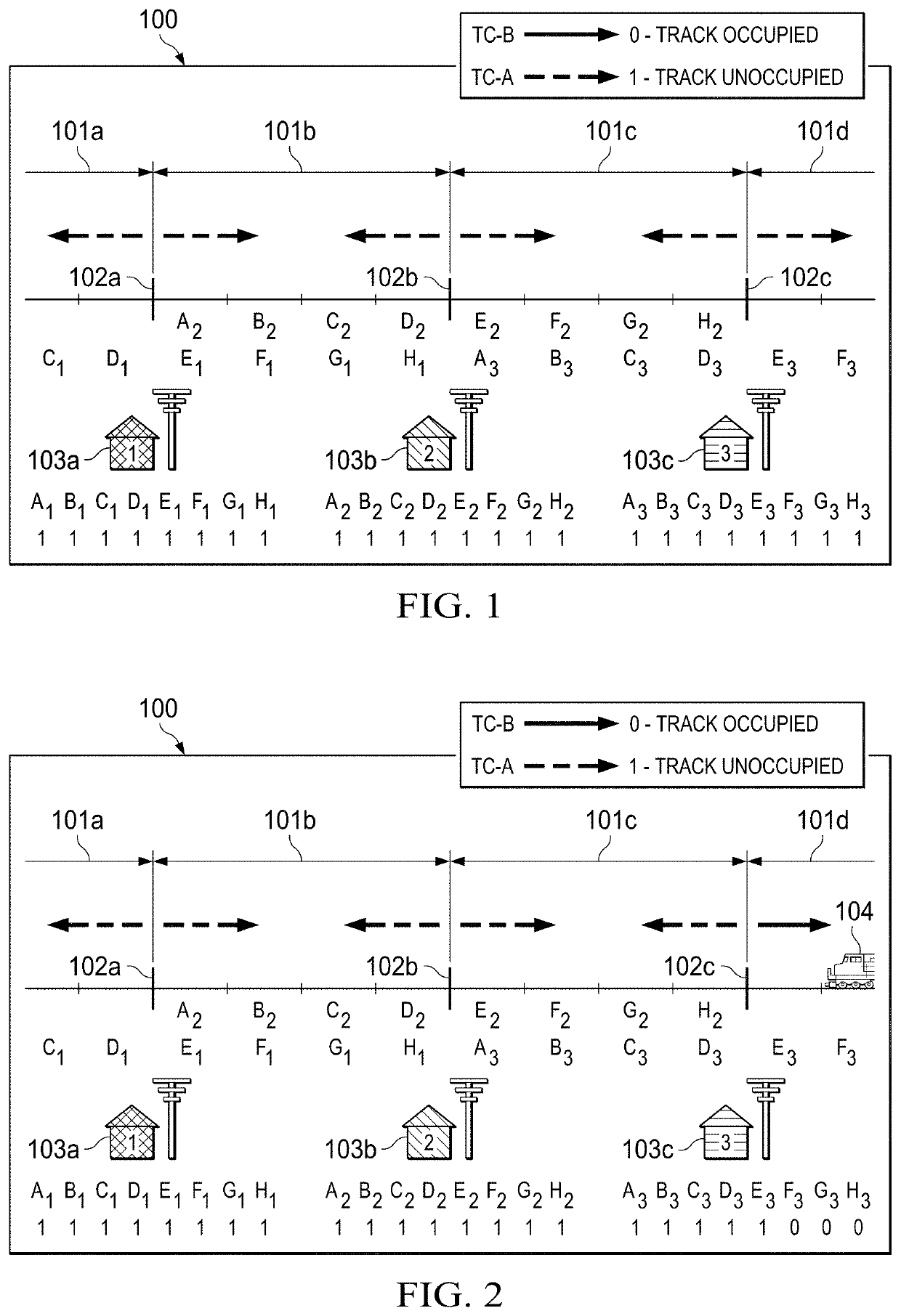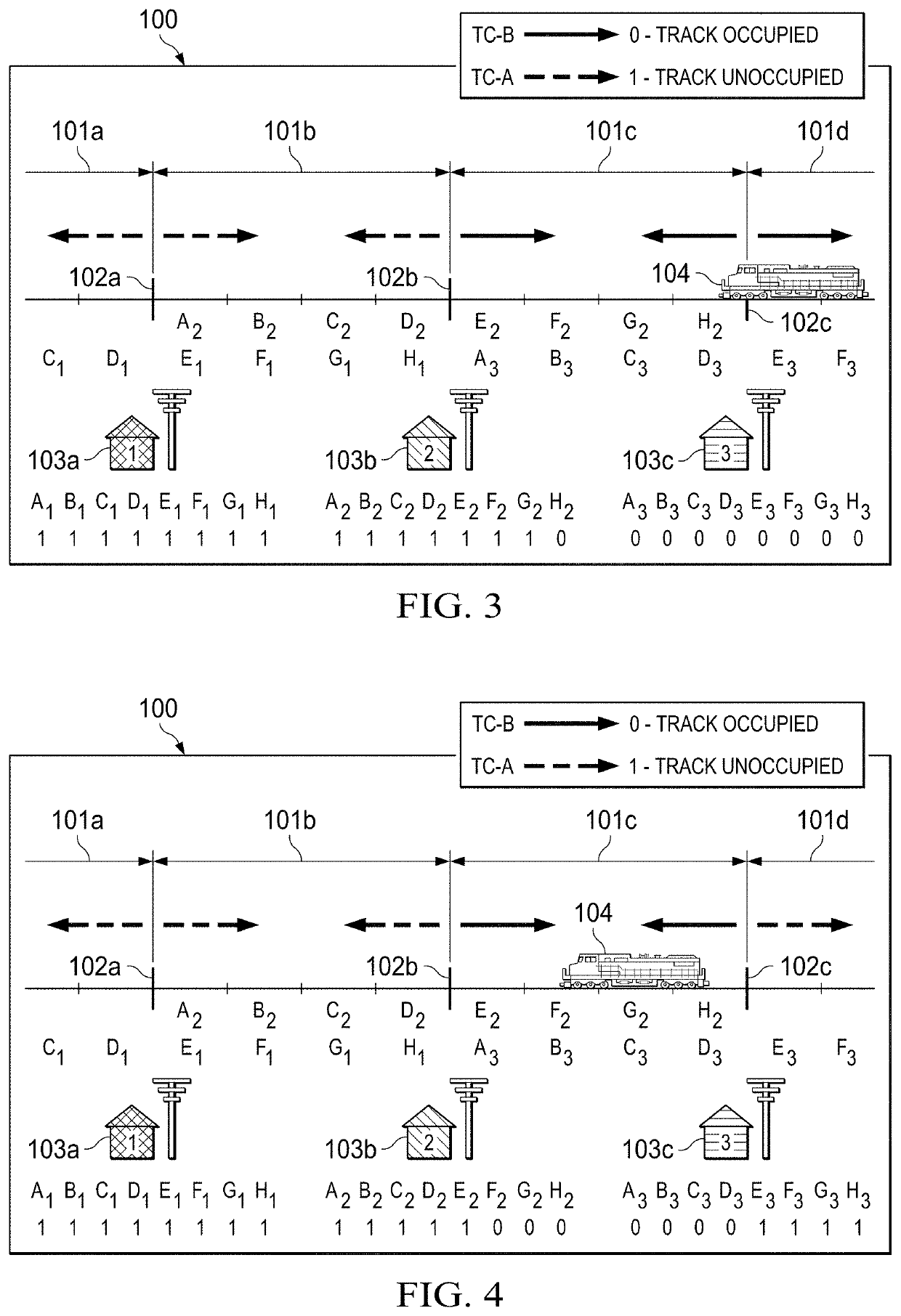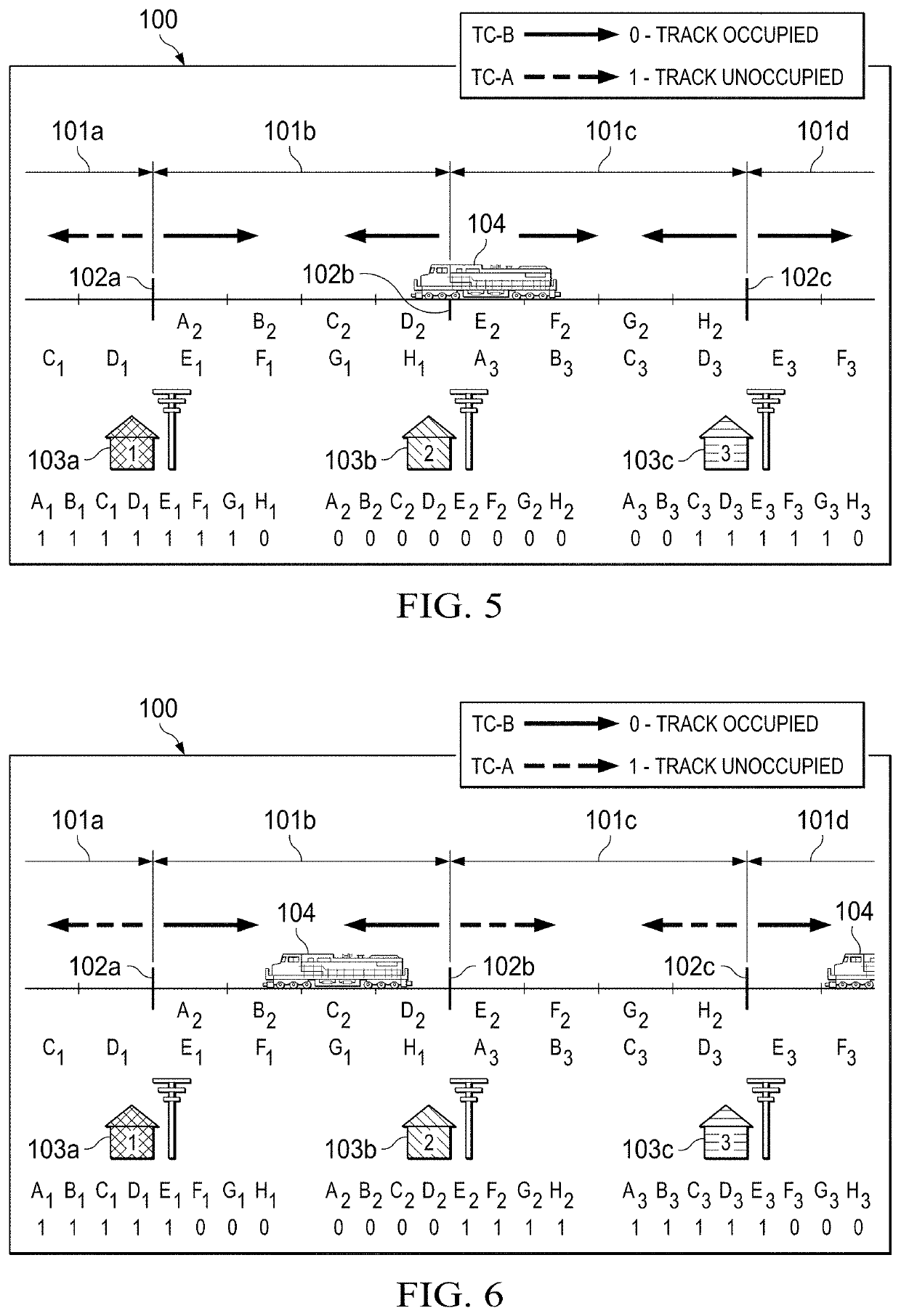Railroad virtual track block system
a virtual track and rail road technology, applied in railway signalling, point-of-use from vehicles, transportation and packaging, etc., can solve the problems of inability to increase track capacity without additional track infrastructure, and inability to identify broken rails within unoccupied blocks. , to achieve the effect of accurately reflecting the braking capability of trains, reducing the spacing of train blocks, and increasing the capacity of existing track infrastructur
- Summary
- Abstract
- Description
- Claims
- Application Information
AI Technical Summary
Benefits of technology
Problems solved by technology
Method used
Image
Examples
Embodiment Construction
[0015]The principles of the present invention and their advantages are best understood by referring to the illustrated embodiment depicted in FIGS. 1-8 of the drawings, in which like numbers designate like parts.
[0016]Two methods of train detection are disclosed according to the present inventive principles. One method determines rail integrity in an unoccupied block. The second method determines train positioning within an occupied block in addition to rail integrity. The following discussion describes these methods under three different exemplary situations: (1) the system at rest (no trains) within the physical track block; (2) operation with a single train within the physical track block; (3) and operation with multiple trains within the physical track block. In this discussion, Track Code A (TC-A) is the available open sourced Electrocode commonly used by the railroads and is carried by signals transmitted via at least one of the rails of the corresponding physical track block....
PUM
 Login to View More
Login to View More Abstract
Description
Claims
Application Information
 Login to View More
Login to View More - R&D
- Intellectual Property
- Life Sciences
- Materials
- Tech Scout
- Unparalleled Data Quality
- Higher Quality Content
- 60% Fewer Hallucinations
Browse by: Latest US Patents, China's latest patents, Technical Efficacy Thesaurus, Application Domain, Technology Topic, Popular Technical Reports.
© 2025 PatSnap. All rights reserved.Legal|Privacy policy|Modern Slavery Act Transparency Statement|Sitemap|About US| Contact US: help@patsnap.com



